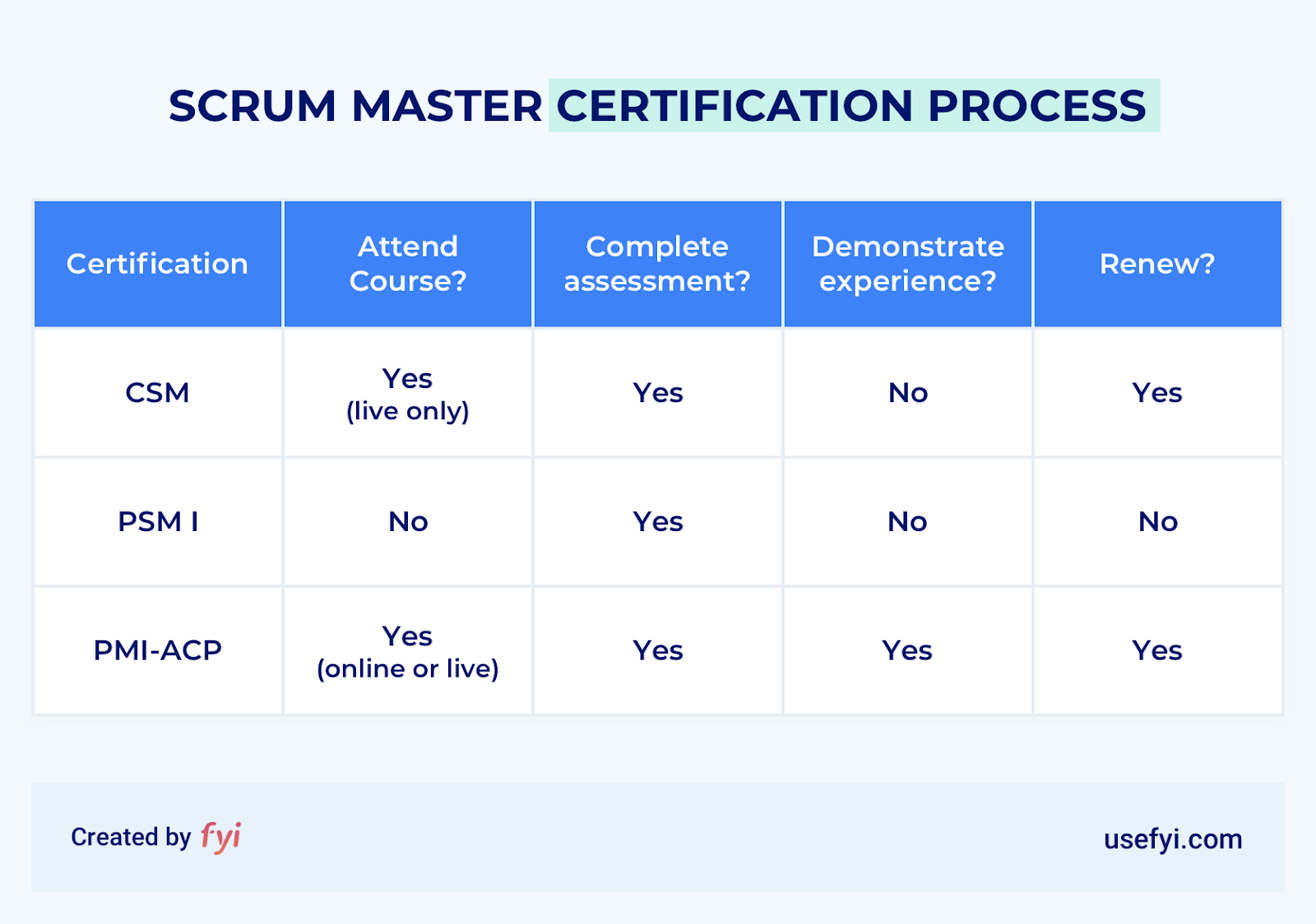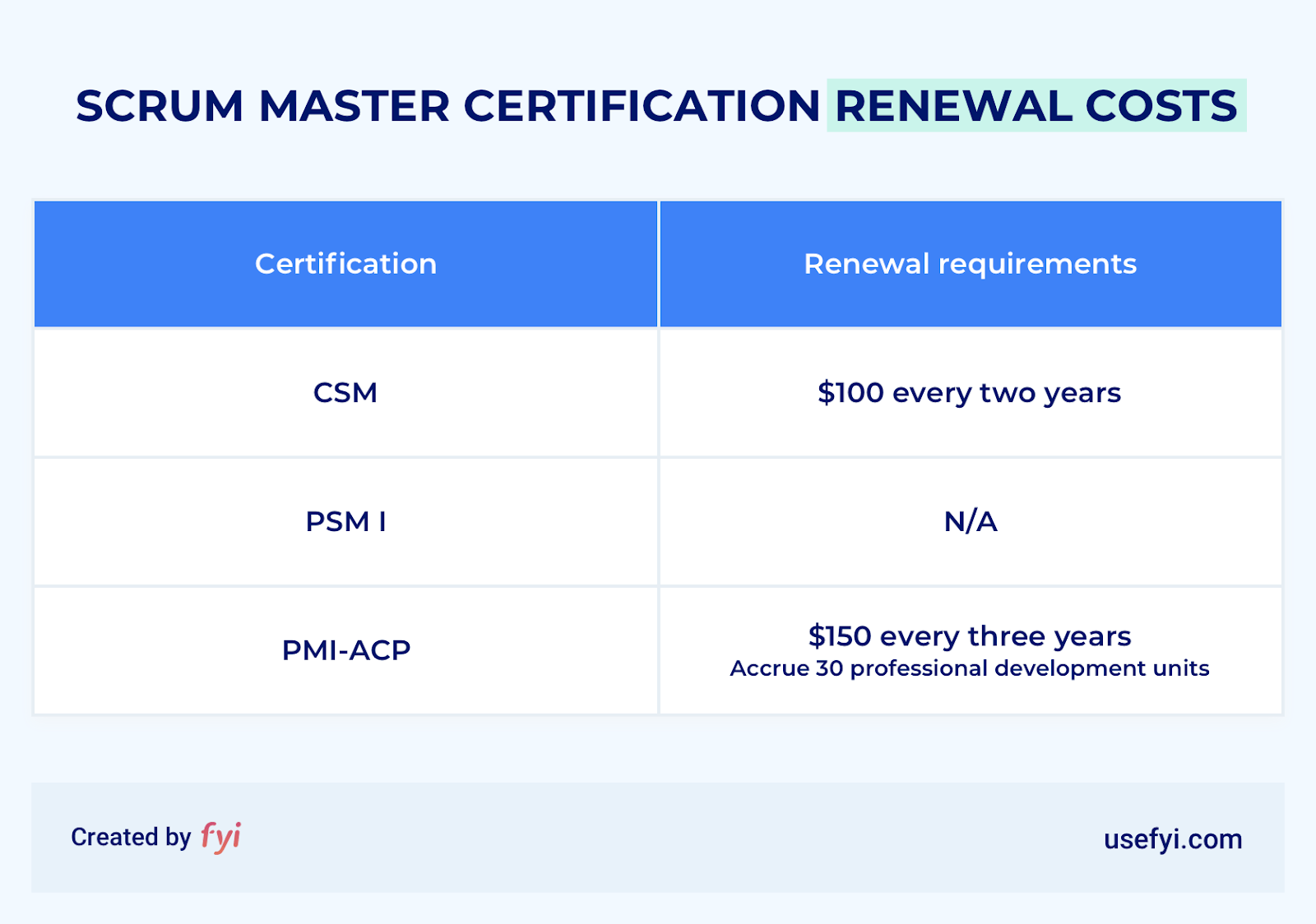How to Become a Scrum Master

Thinking about becoming a Scrum master? Wondering how to get the experience?
The first thing to know: it takes broad knowledge of both the technical and human side of running sprints to reach Scrum mastery. There’s a lot to learn. This post breaks this complex mass of knowledge down to its basic building blocks.
First, let’s review what the role involves. Then I’ll walk you through the four essential steps for how to become a great Scrum master, regardless of which path and certification you choose.
What does a Scrum master do?
Scrum masters support the Scrum team, made up of developers and the product owner.
A Scrum master is not a project manager, though. In Scrum, the development team is self-organizing—it’s a bottom-up approach. The product owner is in charge of deciding what the team works on. So how does the Scrum master pitch in?
It’s their job to make sure the team works within the Scrum framework and has everything they need to succeed. To that end, a Scrum master needs to have serious knowledge of Scrum and the ability to handle complex interactions with and in between folks both on and off the team.
For more on that, check out our post dedicated to Scrum masters, the role, and why it’s important. Here we’ll start getting into how to become one.

1. Deepen your Scrum knowledge base
Scrum is a framework to use, not a list of rules to know. And by definition that framework requires constant inspection and adaption of Scrum principles. Regardless of how much experience they have in applying these to the real world, a Scrum master never stops learning.
Why not read a Scrum book or two? There’s so much to Scrum that it’s wise to keep the language and systems handy. At the same time, Scrum isn’t an exact science, so the insight you can gain from multiple authors will round out your understanding of all the different ways to put these systems to work.
If you have opportunities to gain experience in Scrum through your job, go for it. If not, you know the drill: go online.
The Scrum Guide is a great place to start. From there, you’ll find a virtually bottomless well of Scrum knowledge in forums, videos, podcasts, and through the organizations that offer Scrum master certifications.
2. Get your professional Scrum master certification
Once you’re fluent in basic Scrum concepts and ideas, the next step is pursuing a Scrum master certification.
Can you become a Scrum master without one?
Maybe. Some of the best Scrum masters I know have never been certified. Many of them stepped into the role before it had a formal name. It can still happen at companies that haven’t yet formalized their journey to agile. But in 2019, if you’re serious about becoming competitive, getting certified as a Scrum master signals that:
- You’re interested and knowledgeable in Scrum
- You’re the type of person who invests in their professional development
- Your experience is bolstered by concrete Scrum principles
There are a few different certs to choose from. Go to our post on how to get a Scrum master certification for an in-depth look at the specific fees and requirements for the industry’s best-recognized credentials:
- Certified Scrum Master from Scrum Alliance
- Professional Scrum Master from Scrum.org
- PMI Agile Certified Practitioner from the Project Management Institute
As you’ll see, the process to obtain each certification is different:

So which certification is right for you?
Do your research. Look at who’s getting hired at the places you want to work—what qualities do they have? What agile communities have they joined?
Also comb through Scrum master job descriptions. What certifications are they calling for? What other credentials or areas of expertise?
If you want to be a Scrum master at a specific company, be sure to confirm you’re working toward a credential they value. It might be the kicker that gets you the role.
Before you make the investment, check whether your company can foot the bill for you to get certified. Even if the business doesn’t practice Scrum, there’s still a solid case to be made for the opportunity to engage with a new perspective on product development.
3. Gain Scrum experience
The path to becoming a Scrum master doesn’t end with certification. That’s just the beginning. Servant-leader roles like this evolve as the team adapts.
That’s why this step and the next, as you saw in the illustration above, cycle and repeat for as long as you stay with the team.
First: how do you gain experience with Scrum before you’re hired?
I get it—you need the job to get experience, yet without experience, you can’t get the job. So think of it this way: what can you do to make yourself better suited for the position?
If you’re at a company that practices Scrum, why not go directly to the Scrum team for ideas? Try to put yourself in the room where sprint decisions are made. You may be able to:
- Sit in on sprint events: These are at the heart of Scrum. Watch what the team does and how they do it. How do they share knowledge and respond to problems? What does the Scrum master do to facilitate this? For the price of a cup of coffee, you might be able to pick a few brains.
- Help out with the grunt work: Scrum teams have their fair share of recurring tasks to perform. If you can manage to take on a few of these responsibilities here and there, you can get a good idea of how to direct the routine work that goes into a sprint, and over time, how the work changes as the team inspects and adapts its processes.
Even if your company does not practice Scrum, there are still ways to develop the skills:
- Use your Scrum training: During the certification process, you learned quite a bit about what it takes to do Scrum. Work this knowledge into your day-to-day. Start getting used to using a Scrum board or beginning each morning with an introspective daily Scrum.
- Experiment with Scrum software: Along with Scrum boards, there are a ton of handy software tools for Scrum events and project management. These will be your lifeline as you manage the sprint’s many moving parts. What tools have other Scrum masters found success with?
- Take on a small project: Ask your boss about taking the lead on something. Take something off their plate that could develop your organizational and communication skills.
When you do start getting a little practice, don’t expect team meetings to flow perfectly. Anticipate having a lot to learn quickly from the others. The team might be skeptical of a newcomer at first, so build trust by listening to what they need and delivering on it.
Remember, agile values “people over processes.” These simple three words thread through every facet of Scrum team management and inform the role’s must-have soft skills.
The 7 soft skills every Scrum master needs
These have nothing to do with technical knowledge. Soft skills encompass the harder-to-define capabilities that make a Scrum master “good with people”:
- Communication: Scrum masters need to be able to articulate their own (and when needed, others’) ideas in a way that facilitates discussion and pushes the agenda forward.
- Listening: As a mediator between the development team and product owner, the Scrum master should be able to make sound decisions based on all views and evidence from both parties.
- Flexibility: Scrum is designed to incorporate last-minute changes in the development process. The Scrum master helps the team get comfortable with rapid change and figure out the best ways to implement it.
- Professionalism: Scrum masters should be models of the diligence needed to keep the sprint on track.
- Conflict resolution: This is about removing obstacles in the team’s path, helping them work through any disagreements involved.
- Teaching: Teams that are new to Scrum will need support in getting into this new groove, which requires patience and genuine investment in helping the team succeed.
- Coaching: Through all the above, Scrum masters need to be good at maintaining a healthy and positive environment where each team member is invested in each others’ success too.
You’ll get to know the technical aspects of the team’s work in time. Again, for now, the human side is where best to start building trust.
4. Renew and review
Like step three, step four repeats for as long as your Scrum tenure.
First of all, don’t let your certification(s) expire. It’s easy enough for employers to verify whether they’re active. Bear in mind that while a PSM certification is for life, the other two I mentioned earlier require ongoing professional development.

For example, on top of renewal costs, the PMI-ACP requires you to log 30 PDUs through continuing agile education and giving back. In this sense, certifications help standardize the process of lifelong learning.
One last note on servant-leadership
Scrum masters are aptly called “servant leaders” for the dual nature of the position. While they are in charge of orienting the team and keeping the sprint aligned with Scrum theory, Scrum masters don’t bark orders.
They lead by serving the team and growing with it. Throughout your ongoing journey to Scrum mastery, humility will be your best friend.

